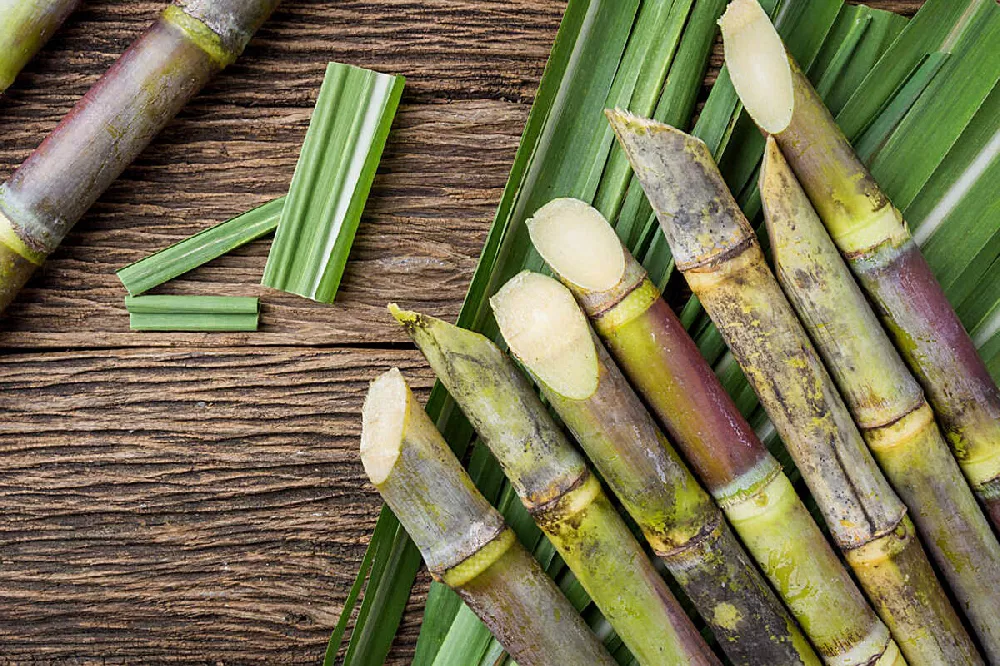A Comprehensive Overview to the Environmental Impact and Sustainability Practices in Walking Cane Sugar Handling
The environmental effect of walking stick sugar processing provides a complex range of challenges that warrant careful examination. From soil destruction and extreme water use to the carbon impact linked with cultivation and manufacturing, the consequences of typical techniques are far-reaching. In comparison, the fostering of innovative sustainability actions offers a pathway toward much more liable manufacturing methods. Understanding the interaction in between these issues is critical for stakeholders in the industry. What certain practices can be implemented to strike a balance in between efficiency and environmental stewardship? The solutions hinge on a more detailed take a look at both the obstacles and potential services.
Overview of Walking Cane Sugar Processing
Walking stick sugar handling involves a collection of systematic steps that transform sugarcane right into refined sugar. Originally, gathered sugarcane is delivered to processing facilities, where it undertakes cleaning to eliminate dirt and debris. Following this, the walking stick is squashed to extract juice, which is then cleared up by getting rid of contaminations with heating and the enhancement of lime.
The clarified juice undertakes dissipation, where water is eliminated to focus the sugar material. These crystals are separated from the staying syrup utilizing centrifugation, resulting in raw sugar.
The final item is after that dried out and packaged for distribution. Throughout this entire procedure, preserving efficiency and quality assurance is important to ensure the sugar meets industry standards. Each action in cane sugar handling not just contributes to the end product but likewise has effects for source usage and waste generation, setting the phase for conversations on sustainability and environmental effects related to sugar production.
Environmental Challenges of Production
The production of walking cane sugar offers several substantial ecological difficulties that warrant attention. One key issue is the considerable usage of agrochemicals, including fertilizers and chemicals, which can cause dirt destruction, biodiversity loss, and contamination of regional water sources. The overflow from sugarcane fields typically carries these chemicals right into neighboring communities, interfering with aquatic life and influencing the health of areas reliant on these water bodies.
One more obstacle is the high energy intake connected with sugarcane processing. The boiling and refining stages require substantial heat, primarily generated by burning fossil gas, adding to greenhouse gas emissions. Furthermore, the large acreage needed for sugarcane growing can result in logging and habitat devastation, further intensifying climate adjustment and threatening wildlife.
Additionally, the labor practices in some areas raise honest issues, as employees might face bad working problems and inadequate salaries. This scenario frequently bolsters a cycle of hardship in local neighborhoods. Cane Sugar Processing. Addressing these environmental difficulties is critical for developing extra lasting techniques in walking cane sugar manufacturing, inevitably profiting both the atmosphere and the neighborhoods included in this market
Water and Land Usage Effect
Water sources and land use are essential components in the walking cane sugar sector that significantly impact the environment. The farming of sugarcane calls for significant water input, with estimates recommending that it can eat approximately 2,000 litres of water per kilo of sugar produced. This extensive use water frequently results in exhaustion of neighborhood water resources, impacting not just the sugarcane haciendas however additionally bordering environments and neighborhoods that depend on the exact same water resources for farming and residential usage.

Additionally, land usage for sugarcane cultivation can result in deforestation and the conversion of all-natural environments right into monoculture plantations. This practice reduces biodiversity, interferes with local environments, and adds to soil deterioration. The growth of sugarcane fields often elbows in on beneficial farming land, developing competition for sources between food and biofuel production.
Sustainable methods, such as maximizing watering methods and applying crop rotation, are vital to mitigate these influences. By taking on more efficient water usage and land administration strategies, the cane sugar sector can lower its environmental impact, making certain an equilibrium between farming efficiency and environmental conservation.
Greenhouse Gas Emissions
Greenhouse gas emissions represent a substantial ecological worry within the cane sugar processing market, specifically as agricultural techniques increase to fulfill global demand. The farming of sugarcane, a plant that thrives in exotic climates, counts greatly on artificial fertilizers and pesticides, which add to laughing gas emissions. Furthermore, land-use modifications, including logging for brand-new sugarcane ranches, release carbon dioxide saved in plant life and soil.
During processing, energy consumption is an additional major resource of greenhouse gas emissions - Cane Sugar Processing. Many sugar mills make use of nonrenewable fuel sources to power machinery and generate warmth, resulting in substantial carbon footprints. Furthermore, the transport of raw sugarcane and completed products includes layers of exhausts with gas burning in vehicles
The advancing result of these emissions exacerbates climate modification, positioning risks not just to the environment however additionally to the long-lasting practicality of the market. Stakeholders must identify the urgent demand for extensive techniques that attend to these exhausts. This entails assessing existing farming techniques, processing approaches, and transport systems to recognize areas for renovation and mitigation. Attending to greenhouse gas exhausts is necessary for fostering an extra sustainable walking stick sugar industry in an altering environment.

Sustainable Practices and Innovations
Lasting techniques and technologies are progressively important in the walking cane sugar handling industry as stakeholders look for to minimize environmental impacts while keeping efficiency. One substantial improvement is the application of incorporated crop management, which enhances source use by combining dirt monitoring, insect control, and crop turning strategies. This technique improves yield while minimizing chemical inputs and protecting dirt health.
Furthermore, the fostering of renewable resource resources, such as biomass from sugarcane residues, has obtained grip - Cane Sugar Processing. By converting waste products right into energy, processing facilities can reduce their dependence on fossil gas, therefore lowering greenhouse gas exhausts
Water administration practices have actually additionally seen renovations with the recycling and reusing of water in handling plants, significantly minimizing freshwater usage. Technologies in modern technology, such as accuracy agriculture, allow farmers to check crop health and visit this page source usage better, ensuring lasting cultivation methods.
Additionally, qualification programs like Fair Trade and Jungle Partnership encourage ecologically liable farming practices and promote social equity within the supply chain. you could check here By embracing these sustainable methods and innovations, the cane sugar processing market can boost its resilience and add favorably to ecological stewardship.
Final Thought
The ecological influence of cane sugar handling provides substantial obstacles, consisting of dirt degradation, high water consumption, and greenhouse gas exhausts, along with moral concerns connected to labor methods. Resolving these concerns through sustainable methods, such as integrated crop administration, renewable resource fostering, and water recycling, is essential. By advertising socially fair and eco liable methods in sugar manufacturing, the sector can mitigate its damaging results, ensuring an extra lasting future for both ecological communities and neighborhoods entailed in this industry.
Cane sugar handling includes a collection of systematic actions that transform sugarcane right into polished sugar. Each action in walking stick sugar processing not just contributes to the last product however additionally has implications for source usage and waste generation, setting the phase for discussions on sustainability and ecological effects connected with sugar manufacturing.
Greenhouse gas emissions represent a substantial environmental issue within the cane sugar handling industry, particularly as farming practices increase to meet worldwide demand.Lasting practices and advancements are progressively vital in the walking cane sugar handling industry as stakeholders seek to reduce environmental impacts while keeping performance.The ecological influence of walking stick sugar processing presents significant challenges, consisting of dirt degradation, high water intake, and greenhouse gas exhausts, along with moral problems Related Site connected to labor methods.